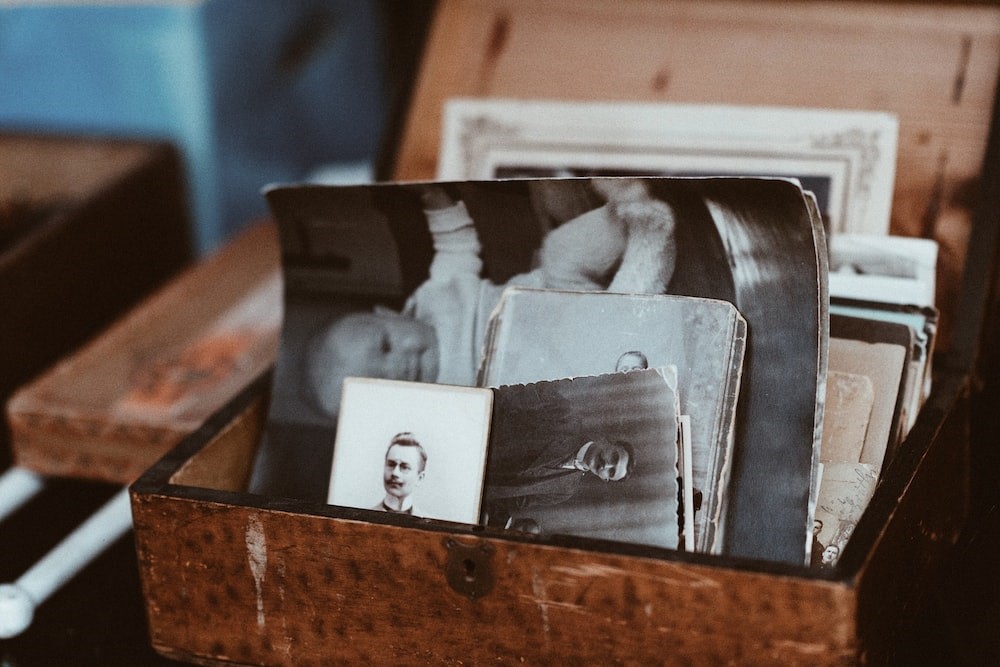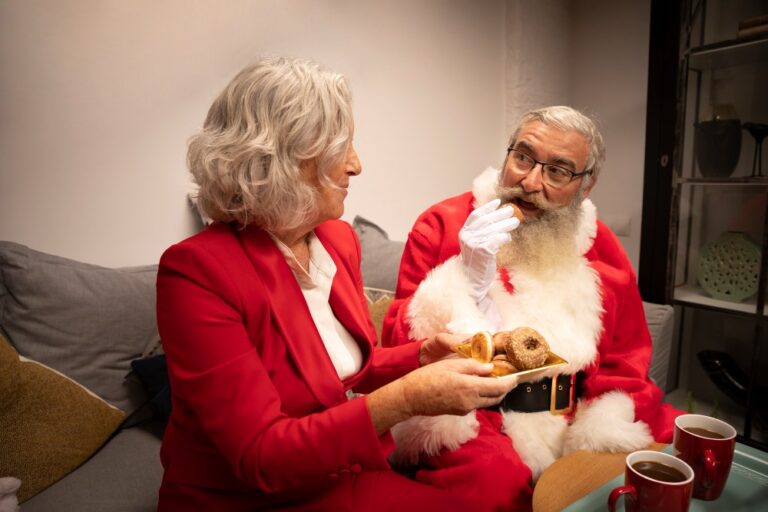People tend to collect and protect mementos from pivotal occasions in their lives. Furthermore, examples include photographs, ticket stubs, notes, and items. Putting these items away in a keepsake box is a great way to ensure they last a lifetime. This article will cover the value of memory boxes and how you may design your unique memory box. We will review the background of memory boxes, the advantages of making one, and how to showcase your finished product.
Explanation of Memory Boxes:
A memory box is a container used to store items that hold personal significance. Furthermore, these things may have symbolic value, remind a person of an important event or time, or have emotional significance. Memory boxes can be small wooden boxes or big plastic cases.
Memory boxes can hold photos, letters, cards, awards, clothing, and other small things. Similarly, the point of a memory box is to give us a real place to keep important memories. It lets us think about the past, experience memories, and remember important times and people.
Brief History of Memory Boxes:
Humans have used memory boxes for centuries to store souvenirs and keepsakes. In ancient cultures, it was common practice to bury a loved one wearing or carrying their most prized possessions. People believed these items would aid the departed in the afterlife.
In the late 1800s and early 1900s, scrapbooks were popular for keeping memories alive. Likewise, people would assemble scrapbooks filled with mementos of happy life events. These scrapbooks were frequently works of art and were handed down through generations.
As technology got more efficient, individuals began saving their memories on digital sites like social media or online image albums. However, traditional memory boxes are widely used because they provide a sensible alternative to digital scrapbooks.
Benefits of Creating a Memory Box:
The following are the benefits of creating a memory box:
- Preserving memories: Important memories may be kept near at all times and preserved for years in a memory box.
- Reflecting on the past: Looking through a keepsake box is a terrific way to recall and appreciate the people and experiences that have shaped your life.
- Connecting with others: A memory box exchange may be a touching approach to bring people closer together.
- Creating a legacy: Memory boxes can be passed down from generation to generation, creating a legacy of memories that future family members can cherish.
- Relieving stress: Creating a memory box can be a therapeutic activity that helps to relieve stress and anxiety.
Materials Needed
You’ll need a few things to start making a memory box. Some of the items you’ll need are listed below.
Types of boxes to use:
- Wooden boxes: They are a popular choice for memory boxes because they are sturdy and easily decorated. They come in different sizes and styles, so you can pick one that works best for you.
- Cardboard boxes: Cardboard boxes are affordable for creating a memory box. They can be decorated with paint, paper, and other materials.
- Metal tins: Metal tins are a unique option for a memory box. They may be painted or decorated with stickers.
- Suitcases or trunks: Old suitcases or trunks can make a great memory box, especially if you create a travel-themed box.
- Mason jars: Mason jars are a popular option for memory jars or memory boxes. They fit photographs, messages, and souvenirs.
Decorative materials to use for the box:
- Paint: Acrylic or spray paint can add color to your box.
- Scrapbook paper: Scrapbook paper comes in various patterns and can cover the box.
- Fabric: Use fabric to cover your box or to make small embellishments.
- Stickers: Stickers can add a personal touch to your memory box.
- Ribbon or lace: Use ribbon or lace to add texture and interest to your box.
- Washi tape: Washi tape is a decorative adhesive tape that can add patterns and color to your box.
Tools required to decorate the box:
- Scissors: Use scissors to cut paper, fabric, and other materials.
- Glue: A glue stick or craft glue can attach paper, fabric, and other materials to the box.
- Paintbrushes: Use paintbrushes to apply paint or glue to your box.
- Mod Podge: Mod Podge is a popular adhesive and sealer that can attach a paper and other materials to your box.
- Embellishments: Small embellishments like buttons, beads, and rhinestones can add interest to your box.
Step-by-Step Guide to Making a Memory Box
Putting together a memory box is a personal, one-of-a-kind experience that may be personalized to match your preferences and experiences. Here are some ideas to make your memory box stand out:
Using Unique or Unconventional Items:
While traditional items like photographs, tickets, and letters are great additions to a memory box, adding unique or unconventional items can make your memory box even more special. Furthermore, consider adding a seashell from a special beach vacation or a small fabric from a memorable outfit. These small items can help bring back memories uniquely and personally.
Including Personal Notes or Letters:
Adding personal notes or letters to your memory box can provide a glimpse into your thoughts and feelings during a specific moment. Consider writing a letter to yourself that you can read years later or including notes from friends and family members. These personal messages can add a deeper emotion and meaning to your memory box.
Adding a Soundtrack or Playlist:
Music is a powerful way to trigger memories and emotions. Consider creating a soundtrack or playlist associated with a specific event or period you want to remember. You can include songs that were popular during that time or songs with a special meaning for you. Including a CD or USB drive with the playlist can be a great addition to your memory box.
Making a Memory Box with Others:
Creating a memory box with others can be a great bonding experience and help capture shared memories. Also, consider creating a memory box with a friend, partner, or family member. You can each add items that are meaningful to you and create a shared space for memories that you can cherish together.
Incorporating Different Textures and Materials:
Different textures and materials can add depth and dimension to your memory box. Consider adding fabrics, ribbons, or dried flowers to add a tactile element to your memory box. You can also experiment with different papers and textures to create a layered and visually interesting box.
Including Artwork or Creative Projects:
If you have artwork or creative projects associated with a particular memory or period, consider including them in your memory box. Also, this can include drawings, paintings, or even small sculptures. Including creative projects can add a personal touch to your memory box and help capture a specific moment.
Using Color to Enhance Your Memory Box:
Using color is a great way to enhance your memory box and create a cohesive theme. Similarly, consider using a color scheme associated with a particular memory or event or incorporating colors with a special meaning. Similarly, you can use colored paper, markers, or paint to create a colorful and visually appealing memory box.
Personalizing the Outside of Your Memory Box:
While the inside of your memory box is important, don’t forget about the outside! Personalizing the outside of your memory box can add a unique touch and make it stand out. Furthermore, consider using stickers, paint, or even decoupage to decorate the outside of your box. You can also add a personal touch by adding your name or a special date to the outside of your memory box.
Including Memorabilia from Significant Events:
Including memorabilia from significant events can help to capture memories tangibly. Also, consider including a graduation cap or a wedding invitation in your memory box. These items can help transport you back to that moment and create a sense of nostalgia.
Incorporating Fragrance:
Incorporating fragrance can add an extra sensory element to your memory box. Also, you can add small sachets of potpourri or dried flowers or a small vial of essential oil to your memory box. The scent can help to trigger memories and create a multi-sensory experience.
Themes and Ideas for Memory Boxes
There are countless themes and ideas for memory boxes. Here are just a few to get you started:
Wedding or engagement:
Create a memory box for your wedding or engagement with items like your invitation, a piece of your wedding dress, photos, and love notes.
Baby’s first year:
Capture the milestones and memories of your baby’s first year with a memory box that includes items like their first outfit, hospital bracelet, photos, and toy.
Graduation or milestone achievements:
Celebrate your or your loved one’s achievements with a memory box that includes items like diplomas, awards, photos, and notes of congratulations.
Travel memories:
Create a memory box to remember your travels with items like tickets, postcards, maps, and souvenirs from the places you visited.
Pet memories:
Honor your furry friend with a memory box that includes their collar, paw print, photos, and favorite toy.
Sports or hobby memorabilia:
Make a memory box with tickets, tools, photos, and keepsakes showing off your favorite sport or hobby.
Remembering someone you loved:
Remember a loved one who has died by putting pictures, letters, and other items in a memory box.
Tips for Making Your Memory Box Extra Special
Here are some tips for making your memory box even more special:
Using unique or unconventional items:
Think outside the box and include items unique to you or your memories. Similarly, this might include a lock of hair, a handwritten note, or a piece of artwork.
Including personal notes or letters:
Add a personal touch to your memory box by including notes or letters to yourself or loved ones. Also, these can explain the significance of the items in the box and add a personal touch.
Adding a soundtrack or playlist:
Put a CD or mix of songs in your box that reminds you of the moments. This can be a great way to remember the good times and give your box a more personal touch.
Making a memory box with others:
Creating a memory box with friends or family can be fun and meaningful. Furthermore, you can all contribute items and memories to the box and share the experience of creating something special together.
Alternatives to Memory Boxes
If a memory box doesn’t suit your style or needs, here are some alternative options:
Digital memory boxes:
Create a digital memory box using a website or apps like Canva or Adobe Spark. This allows you to include digital photos and other items and can be easily shared with others.
Memory jar or time capsule:
Collect memories and items in a jar or time capsule to be opened later. This is a great option for marking milestones or special events.
Shadow boxes or picture frames:
Create a shadow box or picture frame with items related to your memories. Similarly, this is a great option for displaying your memories on a wall.
Memory book or scrapbook:
Make a memory book with photographs and other memorabilia. This is perfect for traditional memory-keepers.
Displaying Your Memory Box
Once your memory box is complete, you might want to display it in your home or office. Here are some ideas for displaying your memory box
On a bookshelf:
Put your keepsake box on a shelf in your living room and surround it with additional mementos. Similarly, this improves the room’s aesthetics and makes accessing the box a breeze.
In a glass case:
Consider enclosing your memory box in glass to protect it from dust and other contaminants. This lets you check out what’s inside the box without risking damage.
On a coffee table:
Your memory box should be kept in an easily accessible spot in your home, such as a coffee table. This may be a great topic of conversation when guests come.
On a wall:
If you have a shadow box or picture frame, hang it on a wall to show off your memories. Also, this is a great choice for people who want to decorate their homes with memories.
In a dedicated memory box display:
Consider creating a dedicated memory box display if you have multiple memory boxes or a large collection of items. Also, this can be a great way to showcase your memories and create a focal point in a room.
Conclusion
In conclusion, memory boxes are a wonderful tool for guarding and cherishing irreplaceable memories. Also, if you follow the advice in this manual, you may create a unique keepsake box that will be treasured for years to come. Whether commemorating an important life event or capturing everyday moments, a memory box is a wonderful way to do both. So why not get started straight now on your keepsake box?



